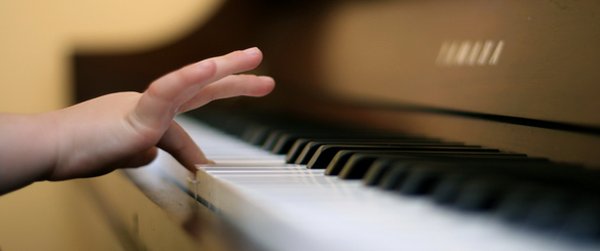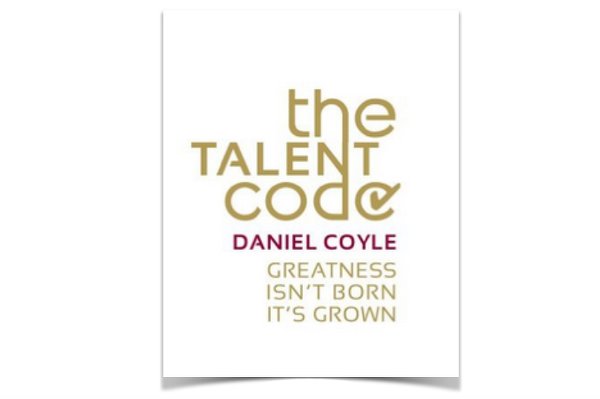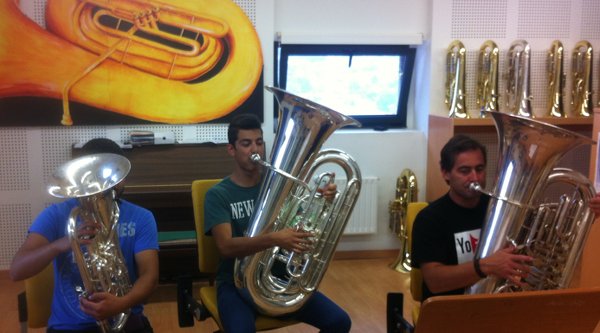3 RULES TO EFFECTIVE MUSICAL PRACTICE
Musicians spend many hours of them lives practicing with them
instruments, because of this, It´s very important to have good techniques to
maximize our practice time.

I have been a great fan of music studies techniques from many years.
I would like to write a complete article about this subject in the near future,
because I think It´s very important for musicians.
Next, I´m going to speak about the 3 rules to deep practice what Dan
Coyle introduces in his book The Code Talent. This book is highly recommended
to everybody.

Daniel Coyle visited nine of the world’s greatest
talent hotbeds, tiny places that produce huge amounts of talent, this include a
small music camp in upstate New York as well as an elementary school in
California or the baseball fields of the Caribbean
Those 3 rules are very easily adapted to musical practice, we only
need to know them well and practice them obstinately.
What is the deep practice?
The deep practice is very similar to going into an unknown dark and
unfamiliar room. First, we start exploring slowly, we pay attention to our
mistakes, and we repeat our movements little by little. After we are begin to
move easer.
According to Coyle “Deep practice means doing three
things: 1) chunking - which means breaking things down into their basic parts,
then putting them together again in ever-larger groupings; 2) reaching just
past the edge of your ability; 3) intensive repetition. When you combine these
things, you literally change your brain by constructing new circuits, and
making new connections.”
The 3 rules of deep
practice:
Rule 1º: Chunk it up.
- Absorb the whole thing.
Imitation:
This means spending time staring at or
listening to the desired skill, - songs, rhythms, music pieces, etc. – as a
single coherent entity. An example is Ray LaMontagne, a shoe-factory worker,
who at age twenty-two had an epiphany the he should become a singer-songwriter.
He bought dozens of used music albums and holed them up in his apartment. For
two years, every day he spent hours training himself by singing along to the
records. LaMontage said “I would sing and sing, and hurt and hurt, because I
knew I wasn´t doing it right. It took a log time, but I finally learned to sing
from the gut”. Eight years after he started, LaMonntagne´s first album sold
nearly half a million copies.
In my opinion, musicians can apply this
depending on the level of the musician.
- Beginners + Intermediate students: Listen to the music before practicing. Use it as a musical guide.
- Advance students: Practice the music first and then listen to recordings and use them to create own version.
- Break it into chunks:
To divide the music into pentagrams, in small fragments or sections. A good idea to apply this is to make a photocopy and then cut them into small chunks. After, we put these all together into an envelope, shake it, and practice those strips in smaller fragments by altering rhythms, playing them in long notes…etc.

Coyle said “a musician will play a difficult passage in dotted rhythm. This technique forces the player to quickly link two of the notes in a series, then grants them a beat of rest before the next two-note link. The goal is always the same: to break a skill into its components pieces (circuits), memorize those pieces individually, then link them together in progressively larger groupings (new, interconnected circuits)”.
In the Book Mastering the Tuba, Roger Bobo, shows a good example of this technique. He works a difficult passage in the bars 15 and 16 of first moment of R.V. Williams Tuba Concerto. Bobo makes with 16 notes a long 5-pages extensive exercise. If you do it well, you will never have problems again.
- Slow it down:
the slow practice is very important, because it helps to our brain to learn well. In his book, Coyle explains, “in the Music School of Meadowmount the notes are stretched into whale sounds. One teacher has a rule of thumb: if a passer-by can recognize the song being played, it´s not being practiced correctly. He spends three hours covering a single page of music
Rule 2: Repeat it.
Practice doesn´t make you perfect. The perfect practice makes you perfect.

Rule 3: Learn to fell it.
It´s very important to get a balance point where you can sense the errors when they come. If we want to avoid mistakes, first we should learn to feel them immediately. A violin teacher said to his students “If you hear a string out of tune, it should bother you a lot. That´s what you need to feel. What you are really practicing is concentration.”
Coyle writes about the sweet spot: “that productive, uncomfortable terrain located just beyond our current abilities, where our reach exceeds our grasp”. For the author, Deep practice is not simply about struggling; it´s about seeking out a particular struggle, which involves a cycle of distinct actions:
1º - Pick a target.
2º - Reach for it.
3º - Evaluate the gap between the target and the reach.
4º - Return to step one.
#--#
If you liked with this post, you can share it in social media using the buttons below.














Leave a comment